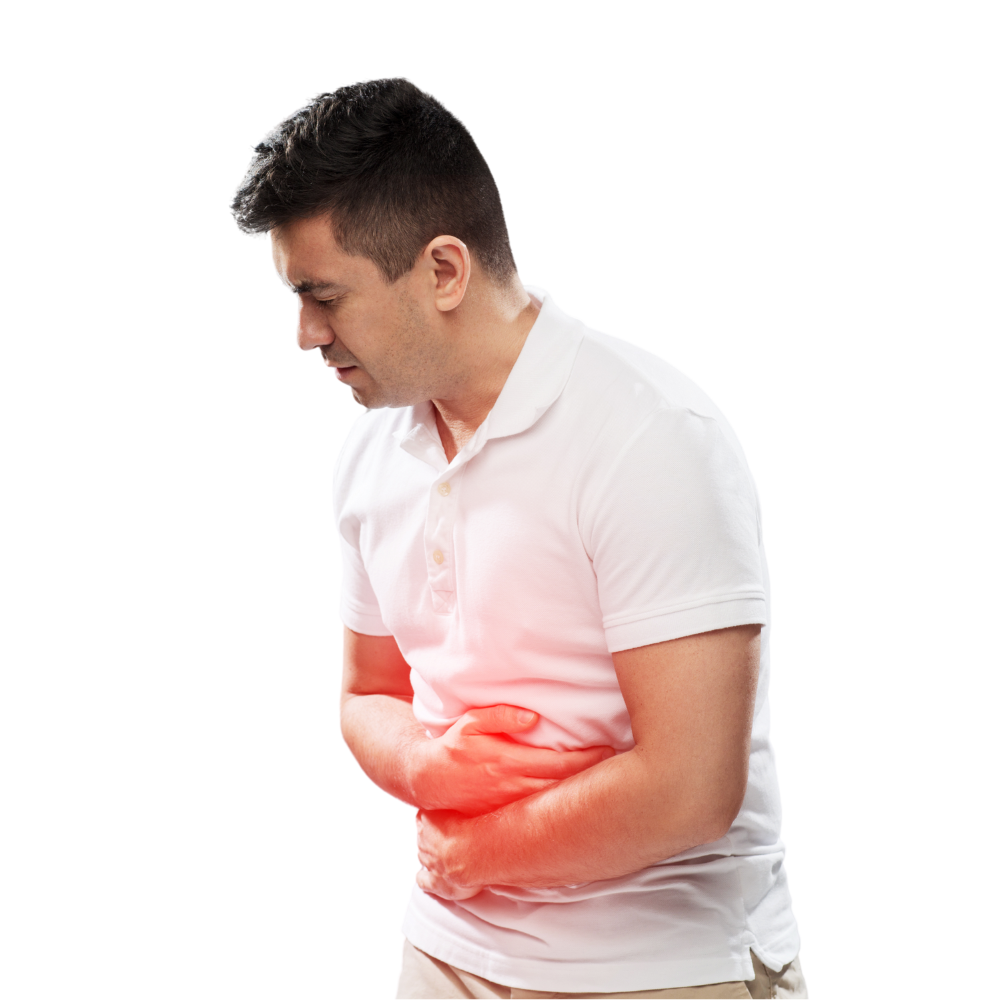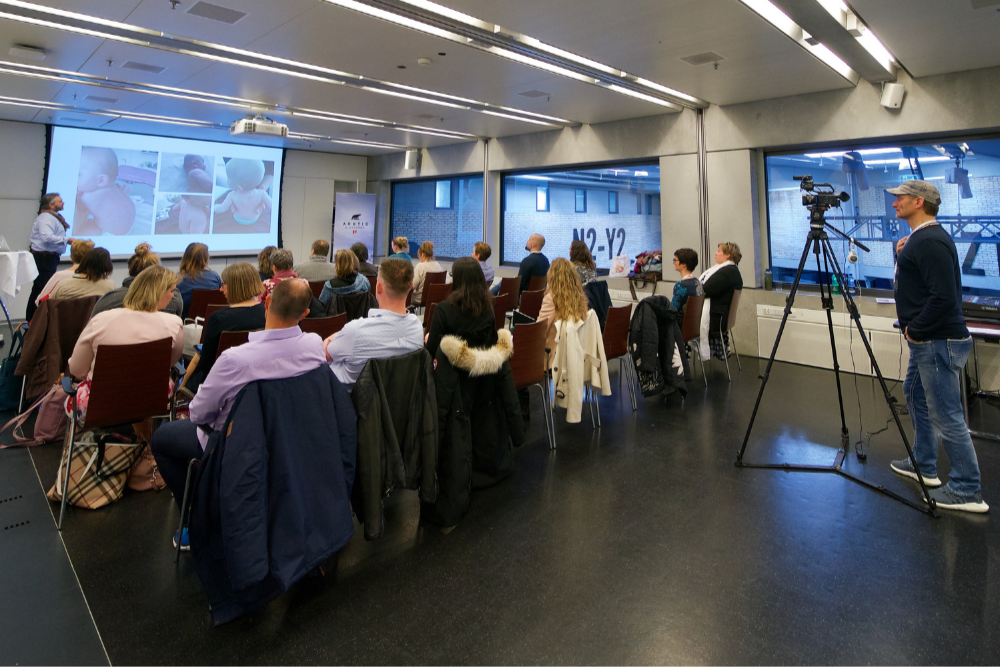[g_podcast id="14276279"]
In this episode, I talkto internal medicine physician Dr. Arno Heinen and physiotherapist,osteopath and alternative practitioner MarkusOpalka about biorhythms, the brain's "alarm library" and what even our voice reveals about our state of health.
We talk about the following questions:
Conventional medicine views the biorhythm as a kind of clockwork in which all processes in the organism interlock like the cogs of a clockwork mechanism. But there is nothing living about clockwork. In this way, nothing living, nothing new or variable can happen. If this were really the case, the organism would not be able to evolve and adapt to its environment.
In reality, it is more of a biorhythmic system in which many rhythms take place simultaneously.This system controls all the processes that take place in our organism: Organ function as well as cell metabolism, but also our hormone metabolism, and it does so in absolute coherence, i.e. in the greatest possible order that exists.
The biorhythmic system ensures for the highest possible order in the body's processes.The term "biorhythm" is often associated with three curves of mental, spiritual and physical constitution. However, this has nothing to do with the biorhythm that Dr. Heinen and MarkusOpalkaare talking about.
Laypeople often understand "biorhythm" to mean that the body has different, specific functions at different times of the day. According to Dr. Heinen, this is not completely wrong. In traditional Chinese medicine (TCM), there is the 24-hour organ clock, which is characterized by a two-hour rhythm. Two hours are assigned to each of the twelve organs of the human body. A different organ dominates every two hours.
The process is coherent, i.e. in an absolutely predetermined order within which everything takes place in the right place at the right time. The right vital substances - i.e. potassium, sodium, calcium, but also vitamins - must reach the right cells at the right time and in the right quantities for the organs. This is the importance of the biorhythm.
All processes in the human cell take place at the same time. This means that millions of metabolic processes happen simultaneously in the mitochondria at the same time, and they all compete with each other to a certain extent because they need certain intermediate products in order to progress to the next step. The chain before that is dependent on the end product, which may not yet be available. For this to function smoothly, there must be an overriding principle according to which these things take place in an orderly fashion - and this is actually "coherence".
If these rhythms get mixed up, vital substances are suddenly no longer supplied at the right time. We then speak ofdysrhythmic processes and that would be a definition of illness.
The biorhythm is connected to the outside world.There is a light-induced synchronization, whereby we try every morning anew to bring ourselves into harmony with the external rhythms that surround us - e.g. changing seasonal or diurnal conditions - via the light conditions and the hormone axis. In this way, we cancreate a certain coherence with the internal rhythm and also with the external rhythm.
Several times a day,we havethe opportunityto restructure this rhythmagain and againor to integrate ourselves into the flow of this rhythm.The better this works,the more structured we live our daily routine or maintain recurring rhythms, the more stable our rhythm is. This applies to the majorseasonal data-contrast="auto">n rhythmsas well as the daily rhythms: maintaining a culture of taking breaks, eating regular meals, cultivating a cultivated sleep pattern andadjusting your dailyactivities alittle helps to ensure that these internal and external rhythmscan adapt well to each other.
The more disruptive factors you integrate - i.e. living against your own rhythm - for example, going to the gym at three o'clock in the morning because you work shifts - the less likely it is that your body will respond to this in a meaningful way - in this case by building muscle - because the night-time function is actually completely different. It makes little sense to have such massive activity phases at night. We have very short activity phases during the night, these are our REM phases, and we have the extended rest and regeneration phase.
Rest phases are also part of the rhythm during the day. The two-hour division alsoexists during the day and the individual phases always start at odd times: 5 a.m., 7 a.m., 9 a.m., 11 a.m. etc. If possible, all activities - including sport - should start at these times and should then be concluded after around 90 minutes with a rest period. If you neglect this, your internal rhythm will be disrupted and this can make you ill. If these rest periods are not observed during the day, the activity is extended far into the evening and subsequently disrupts the rest period at night.
This also applies to mental activities. While schools and universities set an example of such a rhythm, this does not usually happen in working life.Dr. Heinen says: "Actually, workers should not be paid for their activity, but for their rest time ." During activity, information is collected and distributed. It is only during the rest period that this information is processed and stored.
The rest phase is alsoimportantduring physical training. If you provide a muscle with a training stimulus and always keep this training stimulus the same,the lost memory isrebuiltduring the rest period. However,this does not result in muscle growth. In order to achieve muscle growth,variables in theactivity time. These variables can only really be understood if the body can answer them sufficiently during the break. As a learning effect for the body, a lot of interrogation means: Ialso have to regenerate a lot of cells again and request more proteins in order to build muscle.
A cardiac load also needs a rest period in order to be answered accordingly. During mental activity - especially when you have to face new challenges, such as solving problems creatively, or when you are in a crisis, as you are right now - it is important to regroup the information you have gained from this process and take another step forward.
"Pause" is often misunderstood. "Pause" does not necessarily mean putting your hands in your lap and doing nothing. For the body, a break simply means an interruption in intensive activity. For example, you can do simple routine tasks, such as filing, short trips to the printer or even sweeping the apartment once in a while to tidy up a bit. Something that is not a big challenge, but a very small routine task in which you can also let your mind wander and get into a state that is a good release from these processes. Meanwhile, the brain is still extremely active during this time. During the break, everything is filed away, structured and stored in a knowledge area that the body can access again at any time.
Activity is always accompanied by its opposite, inactivity - which we then call rest or pause. The two are always repeatedin a coordinated time sequence to form a single unit.
TCM and Ayurvedic medicine know that yin and yang are linked by qi. Qi has the same meaning as our "rhythm" or "rhythm system". Yang represents the time in which energy is created in free form so that old structures dissolve. At the same time, information is released, which is then transferred by the Qi, both the freeenergy and the releasedinformation, to allow new structures to emerge again. This is the meaning of Ying, Yang and Qi.
In Ayurveda, it is Vatathat connectsKapha andPitta. In Western medicine, rhythm iswhatconnects the anabolic - the structure - with the catabolic - the dissolution of structure. The Greeks had the terms "cosmos" and "chaos" for both. Although we understand in the everyday sense as a great disorder,chaos actually contains a high degree of order, precisely because the element of rhythm also contains this order.This shows another meaning that rhythm has: Rhythm in this way - dissolving the old in order to be able to build the new in the first place, and in such a way that we are able to survive again - also means evolution. In other words, evolution would not be possible without rhythm.
The "homeostasis" - the balance - that is so often spoken of does not exist in the body. There is no straight line. The body constantly tries to regulate every value - regardless of whether it is the blood sugar level or another blood value. There are always only the two opposites trying to do this.
In the case of blood sugar, sometimes insulin predominates, sometimesglucagonpredominates. Both work to achieve an optimal blood sugar level. But this is never a constant value. Thesecontradictions in the body maintain a dynamic. If you really reach linearity - a "stasis" - the body can no longer react. Then there is no dynamism to be able to react to internal and external influences or stimuli.
The body can only make an evolutionary adaptation - i.e. a reactive adaptation - to the corresponding challenges, both positive and negative, from the basic floating, rhythmic change of a value over the day, over the minute, over the month or even the year.
We know that bacteria produce metabolic products, in particular neurotransmitters, which can also bring about a certain change in our emotional life via the brain. This can also be based on a rhythm. Here, too, there is a temporal sequence that is partly dependent on the form of the day. A "morning person" who gets out of bed well in the morning, is euphoric, creative and performs best in the morning is supported by their bacteria. This means that their metabolism - including the end products that they make available to the organism - can be used for their own benefit. Conversely, it would be an interesting question whether bacteria would not also help someone who is in a bad mood, depressed or angry, for example, to release these metabolic products in order to transform this emotional world into a real, hormonal situation.
It is now undisputed that we not onlyhavea "head brain", but also a "gut brain". Both are responsible for different things. The world of thought, which is influenced by hormones, is assignedto thehead brain and the world of emotions to the abdominal brain. Both are rhythmically brought into tune with each other again and result in what we then call "emotion".
"Emotion" is therefore always "feeling plus thought". If these are contradictory - as we also experience - we end up in a psycho-emotional imbalance. It has not yet been fully clarified whether thebacteriaalso release hormones thatinfluence our nervous system -which we also have in our intestinal windings - and therefore ourfeelings. Having ahealthy gut can also mean great stability for us mentally and emotionally.
It has been known since around 2000 that the brain stores images of our daily experiences, which are hereditary. In this way, an "alarm library" has been built up for humans over the millions of years since the beginning of mankind.Today, such an alarm library can also be found in the bacteria in our gut.
This means that these bacteria - whose existence has been closely linked to ours for thousands of years - obviously carry comparable images. It makes sense to have such an alarm library, because the image that is storedaftera conflict, an insult or a mental/emotional/physical injury also stores certain strategies. The way an image looks can also influence the appearance of the bacterium.
There is now a new theory that assumes that all the symptoms, all the emotions we have and the diseases that subsequently develop from them are possibly constructed. This is based on the fact that the stored images of the alarm library and the corresponding strategies no longer fit the modern environment.
Today, however, the danger is no longer a wild animal, so diarrhea is no longer helpful. When fleeing from a predator, this would have been useful to reduce weight. Another strategy would have been heart palpitations. This means that the subconscious minddrawson a library of alarms that now gives us symptoms and emotions that are no longer appropriate. We call this stress.
If this situation repeats itself - if there are repeated problems with a partner, boss or teacher - it leads to stress-related illness.Here, too, the rhythm is involved. As we can see, the biological rhythm system in our organism fulfills a variety of tasks and reveals new ways in which we become ill today. We don't initially label this as an illness or a symptom, but as stress or Anxiety. The stress becomes an emotion, the emotion becomes a symptom and without change, with frequent repetitions, illness develops.
So how do you know whether an illness or a symptom can be traced back to a specific and perhaps outdated image?
A mother can hear from the sound of the voice whether her child is unwell - regardless of what the child is saying. The child sees immediate images the moment it starts to tell its mother how it is feeling. The subconscious registers the images, looks them up again in the alarm library and forms the sound of its voice according to this alarm library. In other words, the sound of the voice contains the potential possibility of tracking down such old images.
There are already numerous areas in which the sound of the voice is used as a source of information. For example, call centers and news services can carry out voice analysis, which the call center uses to optimize sales and the news service uses to find out people's true intentions. You can lie with words, but not with the sound of the voice.
However, the sound of the voice can also provide information abouttheconstructed history of an illness.
This provides a new aspect of therapy. The therapist continues the physical treatment as before, but now has an additional tool. If treatment is continued as before, but the images that the subconscious mind uses as a guide are not changed, this has a negative impact on the success of the therapy.
A concrete example: you can of course supportsomeone with poor stool results, a disturbedmicroflora, who also suffers from intestinal inflammation, with appropriate preparations. This will also be successful in the short term, as the body will, quite classically, show a reaction to these substances.
However, it is often the case that if you stop the therapy or discontinue the relevant preparations, the body quickly returns to its original state. The body may have been givena support for the moment , a crutch with which it can walk, but when you take the crutch away again, the old system is immediately back.
It is important that you also change these images in your brain. Of course, you have to know exactly what these images are.With everybad image, the corresponding opposite positive image is also stored. Konkret: The The solution also lies where the problem is.That is a naturopathic principle.
Then you have to work on this principle. You have to learn to deal with the underlying problem in order to take away its power. This doesn't happen overnight, but has to be practiced repeatedly. Every time you succeed and can transform it into a new image, you update your alarm library. This gets better and better each time.
If the two come together - both the positive change in the alarm library and the material support from the doctor or therapist - then we can speak of "healing". In other words, it is not a therapy that merely changes an illness, but rather a completely new level is reached in which the body can deal with the problem differently in future. In this context, this could also be described as a "cure".
The ability to self-regulate or self-heal only works if the biological rhythm system is in harmony again and connects everything: the physical, the mental and the spiritual. If this is successful, the body is once again able to regulate and heal itself.
With the voice frequency analysis (SFA), Dr. Heinen has succeeded in designing a measuring system with which the rhythmic self-regulation and thus self-healing ability can be observed.It can analyze the sound pattern - what a human mother can instinctively do with her own children.The SFA establishes the psycho-physical causal connection. It is part of the"smiley concept", which is abletoharness past injuries for a stress-free future.
The smiley conceptnot only contains the diagnostic method,but alsothe awareness of what is now repeatedlyhammeringat the patient as stress and anxiety in everyday life.He can ratethis on a smiley scale and define a strategy.Of course,his coach, his therapist, is there to support him. Only the decision is up to him data-contrast="auto"> meet yourself.
The motto is:The moment you have cleared up the stress, the smile will return.Of course, the therapeutic, direct possibilitiesshould be exhausted.However, you should always work not only on your body, but also on your mind and soul. You can find more information on thisatwww.smiley-konzept.com.
Rhythm is the controlling element, the controlling force within us that can harmonize everything.Rhythm is whatcan create order within us.
Dr. Heinen and MarkusOpalka hope to have given you a little courage to look into this topic more closely. MarkusOpalka believesthat the time sequencesdiscussed are also important in the very classic practical instruction: At what time should I take certain micronutrients? At what time of day are which activities useful and when not? How can I stabilize my sleep so that my health can benefit from it again?
MarkusOpalka and Arno Heinen would be delighted if they could get people interested in this topic. They have noticed that the general public's interest inchrono-biological processes is growing. They believethat medicine will developin this direction. That we will move away fromstatistical medicine towardsindividualized medicine. This can only succeed ifthe individual rhythm ofeachperson is respected. data-contrast="auto">t will be and can alsobe evaluated.
The two will offer training together.They have already launched an academy at which various training concepts will be offered. Anyone who would like to join in, attend or participate iswelcome to contact MarkusOpalka or Dr. Heinen.They would be very happyabout that, because theycan 't do it alone. The more people who join in and take an active interest in this topic, the better.That would be wonderful.
The academy is called the "Center for Biorhythmic Medicine".Itwill be based in Essen.The training conceptis still being developed. There will be courses on offer.The academy will start with simple things, and anyone who feels like it can also delve very deeply into the subject matter together with the founders.
The links to the series are as follows:
The Smiley Concept: https://www.smiley-konzept.com
Now I recommend you subscribe to the podcast so you don't miss an episode, and if you like what you hear, I really appreciate a review on iTunes or Apple Podcast. Because these reviews also help other people to find the podcast so that we can spread the knowledge about gut and health more.




In this episode, I talkto internal medicine physician Dr. Arno Heinen and physiotherapist,osteopath and alternative practitioner MarkusOpalka about biorhythms, the brain's "alarm library" and what even our voice reveals about our state of health.
We talk about the following questions:
- What exactly is meant by "biorhythm"
- Why rest breaks are so important
- What opposites the rhythmlinks
- What our "alarm library" is and why we need it
- How our voice reflects our well-being
- Parallels between TCM, Ayurveda, Qi and rhythm
- Why the soul and spirit must not be forgotten when treating illnesses
- What the "smiley concept" is
What is "biorhythm"?
Conventional medicine views the biorhythm as a kind of clockwork in which all processes in the organism interlock like the cogs of a clockwork mechanism. But there is nothing living about clockwork. In this way, nothing living, nothing new or variable can happen. If this were really the case, the organism would not be able to evolve and adapt to its environment.
In reality, it is more of a biorhythmic system in which many rhythms take place simultaneously.This system controls all the processes that take place in our organism: Organ function as well as cell metabolism, but also our hormone metabolism, and it does so in absolute coherence, i.e. in the greatest possible order that exists.
The biorhythmic system ensures for the highest possible order in the body's processes.The term "biorhythm" is often associated with three curves of mental, spiritual and physical constitution. However, this has nothing to do with the biorhythm that Dr. Heinen and MarkusOpalkaare talking about.
Laypeople often understand "biorhythm" to mean that the body has different, specific functions at different times of the day. According to Dr. Heinen, this is not completely wrong. In traditional Chinese medicine (TCM), there is the 24-hour organ clock, which is characterized by a two-hour rhythm. Two hours are assigned to each of the twelve organs of the human body. A different organ dominates every two hours.
The process is coherent, i.e. in an absolutely predetermined order within which everything takes place in the right place at the right time. The right vital substances - i.e. potassium, sodium, calcium, but also vitamins - must reach the right cells at the right time and in the right quantities for the organs. This is the importance of the biorhythm.
All processes in the human cell take place at the same time. This means that millions of metabolic processes happen simultaneously in the mitochondria at the same time, and they all compete with each other to a certain extent because they need certain intermediate products in order to progress to the next step. The chain before that is dependent on the end product, which may not yet be available. For this to function smoothly, there must be an overriding principle according to which these things take place in an orderly fashion - and this is actually "coherence".
If these rhythms get mixed up, vital substances are suddenly no longer supplied at the right time. We then speak ofdysrhythmic processes and that would be a definition of illness.
The biorhythm is connected to the outside world.There is a light-induced synchronization, whereby we try every morning anew to bring ourselves into harmony with the external rhythms that surround us - e.g. changing seasonal or diurnal conditions - via the light conditions and the hormone axis. In this way, we cancreate a certain coherence with the internal rhythm and also with the external rhythm.
Several times a day,we havethe opportunityto restructure this rhythmagain and againor to integrate ourselves into the flow of this rhythm.The better this works,the more structured we live our daily routine or maintain recurring rhythms, the more stable our rhythm is. This applies to the majorseasonal
The more disruptive factors you integrate - i.e. living against your own rhythm - for example, going to the gym at three o'clock in the morning because you work shifts - the less likely it is that your body will respond to this in a meaningful way - in this case by building muscle - because the night-time function is actually completely different. It makes little sense to have such massive activity phases at night. We have very short activity phases during the night, these are our REM phases, and we have the extended rest and regeneration phase.
Rest breaks are essential
Rest phases are also part of the rhythm during the day. The two-hour division alsoexists during the day and the individual phases always start at odd times: 5 a.m., 7 a.m., 9 a.m., 11 a.m. etc. If possible, all activities - including sport - should start at these times and should then be concluded after around 90 minutes with a rest period. If you neglect this, your internal rhythm will be disrupted and this can make you ill. If these rest periods are not observed during the day, the activity is extended far into the evening and subsequently disrupts the rest period at night.
This also applies to mental activities. While schools and universities set an example of such a rhythm, this does not usually happen in working life.Dr. Heinen says: "Actually, workers should not be paid for their activity, but for their rest time ." During activity, information is collected and distributed. It is only during the rest period that this information is processed and stored.
The rest phase is alsoimportantduring physical training. If you provide a muscle with a training stimulus and always keep this training stimulus the same,the lost memory isrebuiltduring the rest period. However,this does not result in muscle growth. In order to achieve muscle growth,variables in theactivity time. These variables can only really be understood if the body can answer them sufficiently during the break. As a learning effect for the body, a lot of interrogation means: Ialso have to regenerate a lot of cells again and request more proteins in order to build muscle.
A cardiac load also needs a rest period in order to be answered accordingly. During mental activity - especially when you have to face new challenges, such as solving problems creatively, or when you are in a crisis, as you are right now - it is important to regroup the information you have gained from this process and take another step forward.
"Pause" is often misunderstood. "Pause" does not necessarily mean putting your hands in your lap and doing nothing. For the body, a break simply means an interruption in intensive activity. For example, you can do simple routine tasks, such as filing, short trips to the printer or even sweeping the apartment once in a while to tidy up a bit. Something that is not a big challenge, but a very small routine task in which you can also let your mind wander and get into a state that is a good release from these processes. Meanwhile, the brain is still extremely active during this time. During the break, everything is filed away, structured and stored in a knowledge area that the body can access again at any time.
Rhythm links opposites
Activity is always accompanied by its opposite, inactivity - which we then call rest or pause. The two are always repeatedin a coordinated time sequence to form a single unit.
TCM and Ayurvedic medicine know that yin and yang are linked by qi. Qi has the same meaning as our "rhythm" or "rhythm system". Yang represents the time in which energy is created in free form so that old structures dissolve. At the same time, information is released, which is then transferred by the Qi, both the freeenergy and the releasedinformation, to allow new structures to emerge again. This is the meaning of Ying, Yang and Qi.
In Ayurveda, it is Vatathat connectsKapha andPitta. In Western medicine, rhythm iswhatconnects the anabolic - the structure - with the catabolic - the dissolution of structure. The Greeks had the terms "cosmos" and "chaos" for both. Although we understand in the everyday sense as a great disorder,chaos actually contains a high degree of order, precisely because the element of rhythm also contains this order.This shows another meaning that rhythm has: Rhythm in this way - dissolving the old in order to be able to build the new in the first place, and in such a way that we are able to survive again - also means evolution. In other words, evolution would not be possible without rhythm.
Opposites create dynamics
The "homeostasis" - the balance - that is so often spoken of does not exist in the body. There is no straight line. The body constantly tries to regulate every value - regardless of whether it is the blood sugar level or another blood value. There are always only the two opposites trying to do this.
In the case of blood sugar, sometimes insulin predominates, sometimesglucagonpredominates. Both work to achieve an optimal blood sugar level. But this is never a constant value. Thesecontradictions in the body maintain a dynamic. If you really reach linearity - a "stasis" - the body can no longer react. Then there is no dynamism to be able to react to internal and external influences or stimuli.
The body can only make an evolutionary adaptation - i.e. a reactive adaptation - to the corresponding challenges, both positive and negative, from the basic floating, rhythmic change of a value over the day, over the minute, over the month or even the year.
The gut-brain axis
We know that bacteria produce metabolic products, in particular neurotransmitters, which can also bring about a certain change in our emotional life via the brain. This can also be based on a rhythm. Here, too, there is a temporal sequence that is partly dependent on the form of the day. A "morning person" who gets out of bed well in the morning, is euphoric, creative and performs best in the morning is supported by their bacteria. This means that their metabolism - including the end products that they make available to the organism - can be used for their own benefit. Conversely, it would be an interesting question whether bacteria would not also help someone who is in a bad mood, depressed or angry, for example, to release these metabolic products in order to transform this emotional world into a real, hormonal situation.
It is now undisputed that we not onlyhavea "head brain", but also a "gut brain". Both are responsible for different things. The world of thought, which is influenced by hormones, is assignedto thehead brain and the world of emotions to the abdominal brain. Both are rhythmically brought into tune with each other again and result in what we then call "emotion".
"Emotion" is therefore always "feeling plus thought". If these are contradictory - as we also experience - we end up in a psycho-emotional imbalance. It has not yet been fully clarified whether thebacteriaalso release hormones thatinfluence our nervous system -which we also have in our intestinal windings - and therefore ourfeelings. Having ahealthy gut can also mean great stability for us mentally and emotionally.
The"alarm library" of the brain
It has been known since around 2000 that the brain stores images of our daily experiences, which are hereditary. In this way, an "alarm library" has been built up for humans over the millions of years since the beginning of mankind.Today, such an alarm library can also be found in the bacteria in our gut.
This means that these bacteria - whose existence has been closely linked to ours for thousands of years - obviously carry comparable images. It makes sense to have such an alarm library, because the image that is storedaftera conflict, an insult or a mental/emotional/physical injury also stores certain strategies. The way an image looks can also influence the appearance of the bacterium.
There is now a new theory that assumes that all the symptoms, all the emotions we have and the diseases that subsequently develop from them are possibly constructed. This is based on the fact that the stored images of the alarm library and the corresponding strategies no longer fit the modern environment.
Today, however, the danger is no longer a wild animal, so diarrhea is no longer helpful. When fleeing from a predator, this would have been useful to reduce weight. Another strategy would have been heart palpitations. This means that the subconscious minddrawson a library of alarms that now gives us symptoms and emotions that are no longer appropriate. We call this stress.
If this situation repeats itself - if there are repeated problems with a partner, boss or teacher - it leads to stress-related illness.Here, too, the rhythm is involved. As we can see, the biological rhythm system in our organism fulfills a variety of tasks and reveals new ways in which we become ill today. We don't initially label this as an illness or a symptom, but as stress or Anxiety. The stress becomes an emotion, the emotion becomes a symptom and without change, with frequent repetitions, illness develops.
The sound of the voice
So how do you know whether an illness or a symptom can be traced back to a specific and perhaps outdated image?
A mother can hear from the sound of the voice whether her child is unwell - regardless of what the child is saying. The child sees immediate images the moment it starts to tell its mother how it is feeling. The subconscious registers the images, looks them up again in the alarm library and forms the sound of its voice according to this alarm library. In other words, the sound of the voice contains the potential possibility of tracking down such old images.
There are already numerous areas in which the sound of the voice is used as a source of information. For example, call centers and news services can carry out voice analysis, which the call center uses to optimize sales and the news service uses to find out people's true intentions. You can lie with words, but not with the sound of the voice.
However, the sound of the voice can also provide information abouttheconstructed history of an illness.
Therapysuccesses through holistic treatment
This provides a new aspect of therapy. The therapist continues the physical treatment as before, but now has an additional tool. If treatment is continued as before, but the images that the subconscious mind uses as a guide are not changed, this has a negative impact on the success of the therapy.
A concrete example: you can of course supportsomeone with poor stool results, a disturbedmicroflora, who also suffers from intestinal inflammation, with appropriate preparations. This will also be successful in the short term, as the body will, quite classically, show a reaction to these substances.
However, it is often the case that if you stop the therapy or discontinue the relevant preparations, the body quickly returns to its original state. The body may have been givena support for the moment , a crutch with which it can walk, but when you take the crutch away again, the old system is immediately back.
It is important that you also change these images in your brain. Of course, you have to know exactly what these images are.With everybad image, the corresponding opposite positive image is also stored. Konkret: The The solution also lies where the problem is.That is a naturopathic principle.
Then you have to work on this principle. You have to learn to deal with the underlying problem in order to take away its power. This doesn't happen overnight, but has to be practiced repeatedly. Every time you succeed and can transform it into a new image, you update your alarm library. This gets better and better each time.
If the two come together - both the positive change in the alarm library and the material support from the doctor or therapist - then we can speak of "healing". In other words, it is not a therapy that merely changes an illness, but rather a completely new level is reached in which the body can deal with the problem differently in future. In this context, this could also be described as a "cure".
The ability to self-regulate or self-heal only works if the biological rhythm system is in harmony again and connects everything: the physical, the mental and the spiritual. If this is successful, the body is once again able to regulate and heal itself.
The smiley concept
With the voice frequency analysis (SFA), Dr. Heinen has succeeded in designing a measuring system with which the rhythmic self-regulation and thus self-healing ability can be observed.It can analyze the sound pattern - what a human mother can instinctively do with her own children.The SFA establishes the psycho-physical causal connection. It is part of the"smiley concept", which is abletoharness past injuries for a stress-free future.
The smiley conceptnot only contains the diagnostic method,but alsothe awareness of what is now repeatedlyhammeringat the patient as stress and anxiety in everyday life.He can ratethis on a smiley scale and define a strategy.Of course,his coach, his therapist, is there to support him. Only the decision is up to him
The motto is:The moment you have cleared up the stress, the smile will return.Of course, the therapeutic, direct possibilitiesshould be exhausted.However, you should always work not only on your body, but also on your mind and soul. You can find more information on thisatwww.smiley-konzept.com.
Rhythm is the controlling element, the controlling force within us that can harmonize everything.Rhythm is whatcan create order within us.
The "Center for Biorhythmic Medicine"
Dr. Heinen and MarkusOpalka hope to have given you a little courage to look into this topic more closely. MarkusOpalka believesthat the time sequencesdiscussed are also important in the very classic practical instruction: At what time should I take certain micronutrients? At what time of day are which activities useful and when not? How can I stabilize my sleep so that my health can benefit from it again?
MarkusOpalka and Arno Heinen would be delighted if they could get people interested in this topic. They have noticed that the general public's interest inchrono-biological processes is growing. They believethat medicine will developin this direction. That we will move away fromstatistical medicine towardsindividualized medicine. This can only succeed ifthe individual rhythm ofeachperson is respected. data-contrast="auto">t will be and can alsobe evaluated.
The two will offer training together.They have already launched an academy at which various training concepts will be offered. Anyone who would like to join in, attend or participate iswelcome to contact MarkusOpalka or Dr. Heinen.They would be very happyabout that, because theycan 't do it alone. The more people who join in and take an active interest in this topic, the better.That would be wonderful.
The academy is called the "Center for Biorhythmic Medicine".Itwill be based in Essen.The training conceptis still being developed. There will be courses on offer.The academy will start with simple things, and anyone who feels like it can also delve very deeply into the subject matter together with the founders.
The links to the series are as follows:
The Smiley Concept: https://www.smiley-konzept.com
Now I recommend you subscribe to the podcast so you don't miss an episode, and if you like what you hear, I really appreciate a review on iTunes or Apple Podcast. Because these reviews also help other people to find the podcast so that we can spread the knowledge about gut and health more.

















